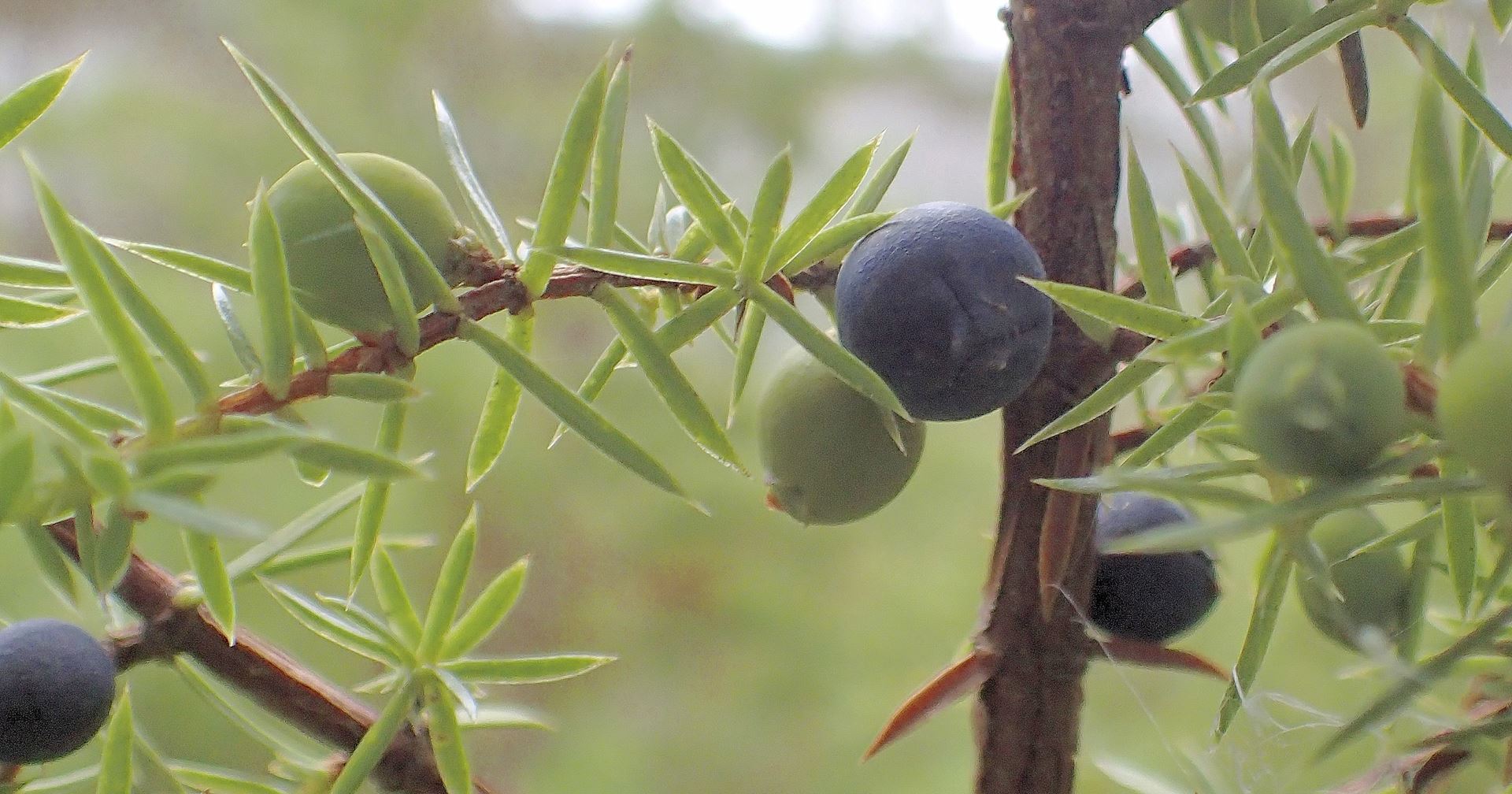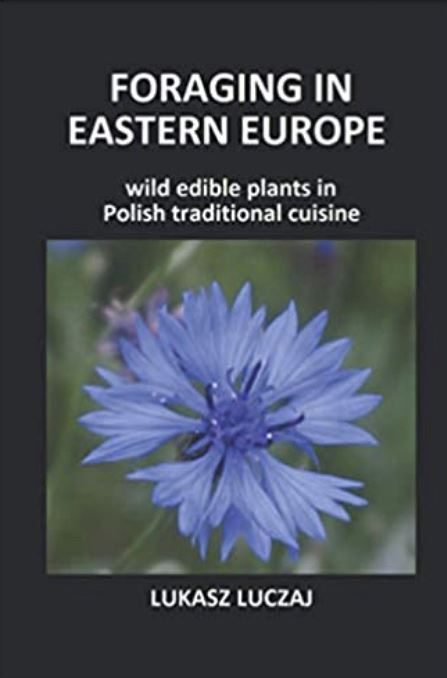Perhaps in January we notice our evergreens more, so lets take a look at Juniper with this excerpt from AoF member Lukasz Luczaj's book on Foraging in Eastern Europe..

Common Juniper Juniperus communis L. Folk name: jałowiec
Juniper is a common coniferous shrub, found mainly on barren soils, usually in pastures, animals do not eat its spiny branches. It is highly light-dependent – the species is now becoming rarer as a result of the disappearance of grazing, as other more quickly growing woodland species grow past it and leave it in shadow.
In Poland the sweet fleshy juniper pseudo-berries are commonly used for food purposes. They are still available in shops, used as a seasoning for bigos (stewed meat and sauerkraut dish usually served in winter), juniper sausage and other meats (comp. Paluch 1984).
Another use of the berries is the preparation of juniper “beer”. In its most primitive form this consisted of grated berries with yeast, but as far as possible it was strengthened with honey or sugar, sometimes hop cones were also added (Moszyński 1929; Chętnik 1936; Malicki 1971; Bohdanowicz 1996; PEA2; PEA6). In the twentieth century the tradition of preparing this beer nearly disappeared. It was the most lively in the Kurpie and Podlasie regions, but it had originally covered almost the whole of Northern Poland, including a part of Pomorze. In the Kurpie region, at the turn of the XX and XXI centuries, the tradition of making this brew, known there as psiwo kozicowe, was significantly revived by tourist interest. It is now made by a few local producers (Madej et al. 2014). Wine was also occasionally made from the cone-berries of juniper in Southern Poland (Szromba-Rysowa 1966; Bohdanowicz 1996), and more often a kind of vodka (Bohdanowicz, PEA VII:361). Chętnik mentions that children ate large amounts of them in the Kurpie area (Chętnik 1936). As Dydowiczowa (1964) mentions, up until the eighteenth century juniper cone-berries were one of the products with which peasants paid taxes.
Juniper gives beer its characteristic flavor and it also probably acquires bacteriostatic properties during the fermentation process. The berries also contain sugar, which was important in the early twentieth century and earlier, when sugar was expensive. Juniper beer was local produce made by poor peasants. Although they made it mainly for festive occasions and weddings, they often could not afford any sugar at all. Thus the proportion of juniper berries, sugar and honey differed depending on the availability of the ingredients. Sometimes the beer was made without any sugar or honey. Nowadays the expensive ingredient is not sugar but juniper berries. Their collection is long, and there are fewer juniper bushes. The typical proportion of ingredients given by people from Kurpie and Podlasie is: 20 l of water, 1 kg of juniper berries (or more if possible), 2 – 2.5 kg of sugar and/or honey (these two ingredients can be added in various proportions), 2 handfuls of hops and 20-60 g yeast. The berries are mashed in a wooden mortar (now also in plastic buckets), mixed with water and left overnight or boiled for 2 hours. Then they are strained through a cloth to separate the seeds and resin. Only the strained liquid is used in the fermentation as the resin is harmful. The liquid is mixed with sugar and honey, heated and cooled. Then the yeast is added. Hops are boiled with little water and an extract from it is added to the container with other ingredients, or is added to juniper berries immediately. Nowadays the beer is fermented in 1.5 l plastic fizzy drink bottles. Originally it was brewed in wooden containers. Psiwo is ready after three days and can be kept in a cool place for another few weeks.
The tradition of fermenting juniper berries in Poland is most likely a very ancient one. A team of researchers, including the famous historian of alcohol Patrick McGovern (McGovern et al. 2013), found remnants of a mixed fermented beverage in three sites from Denmark. The finding dated from 1500 to 200 B.C. Thus the drink may have a history of over three thousand years! It is quite possible that the tradition of juniper beer making in northern Europe has continued uninterrupted since those times. For details of the facts cited in this chapter, see my (and my colleagues’) paper (Madej et al. 2014).
